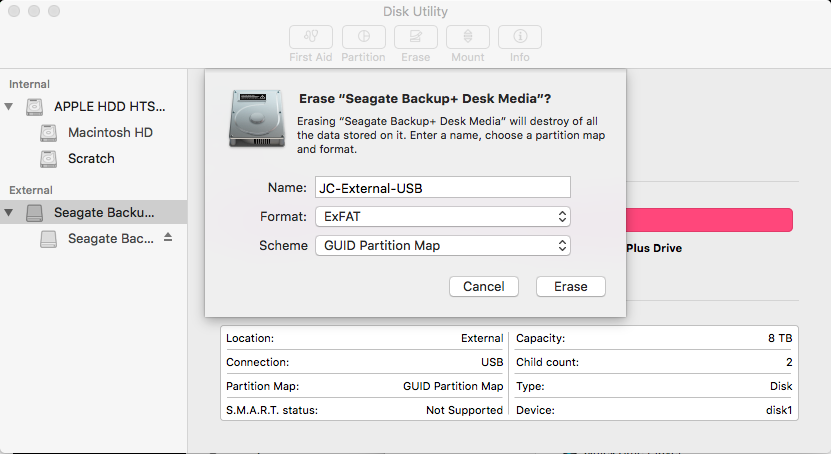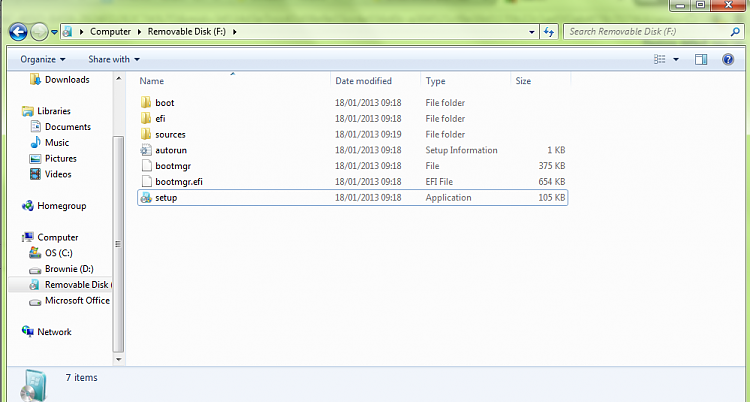Windows Usb Format Tool For Mac
The three disk formatting software for Mac above can help you easily format hard drive, USB flash drive, memory card, and other storage media under Mac OS. However, when you format your hard drive with Super Eraser for Mac, all your data will be permanently lost. For example, in Windows XP 'My Computer' is equivalent to 'This PC' on Windows 10. Step 1: Locate your USB stick under 'This PC', right click on it and select the 'Format' option.
If you have a malfunctioning or corrupted USB drive, formatting it may be the best way to get it back to its original working state. Even if your drive is healthy, you may still want to format it to get rid of the contents there.
This article looks at some ways you can format a USB drive on Windows. If you know some other ways of achieving the same result, tell us about it in the comments section below.
Which File System Should You Use?
Before you format your USB drive, you need to think about which file system to use. File Systems are simply ways of organising data on a storage device (such as hard drives or SD Cards), and support for various file systems varies depending on your operating system.
Windows 10 offers three file system options when formatting a USB drive: FAT32, NTFS and exFAT. Here is the breakdown of the pros and cons of each filesystem.
| Pros | Cons | Best Used For | |
|---|---|---|---|
| Fat 32 | * Compatible with all major operating systems. * Less memory usage. | * Cannot handle single files larger 4GB. *Limited partition size (up to 32GB). | * Removable storage devices such as USB Flash Drives. * Devices that need to be plugged into a variety of operating systems. |
| NTFS | * Can create partitions larger than 32GB. * Can read/write files larger than 4GB. * Supports on-the-fly file encryption. | * Limited cross-platform compatibility. | * Internal hard drives. * Windows system drives. |
| exFAT | * Provides an unlimited file and partition size. | * You may need to install drivers to get exFAT compatibility on Linux. | * External hard drives. * Flash drives if you want to work with files larger than 4GB. |
Now, let’s take a look at some ways you can format your USB drive on Windows 10.
Method 1: Format USB Drive using File Explorer
This is the easiest way and simply requires you to plug in your USB Drive, open the Windows File Explorer and right click your drive to view a number of actions that you can perform.
Clicking the “format” option will open a new window where you can configure the available options before formating your drive.
I will be going with the NTFS file system because I need cross-platform compatibility (Windows and Linux), and I may need to transfer files larger than 4GB on occasion.
As for allocation size, it all depends on what you want to do with your drive. If you have a large drive (such as a 500GB hard drive), a large allocation size such as 32 kilobytes will make your device faster, but storage space may fill up quicker. For small drives, such as 4GB or 8GB flash drives, a smaller allocation size will help conserve space.
I’m going with 4kb (4096 bytes) as my allocation size because I work with small files most of the time, and my flash drive is just 16GB.

The volume label is simply the name of your USB Drive. You can name your drive anything you want.
Once you have selected the options, you can click the format button to begin the formatting process. Ticking the “Quick Format” checkbox means that your drive will not be scanned for bad sectors. If you have a malfunctioning drive, you might want to uncheck that box for a more thorough scanning.
A success message will be displayed on the screen once the formatting is completed.
Method 2: Format USB Drive Using Command Prompt
Another method of formatting your USB drive is by using Diskpart, a command prompt utility.
All commands given below should be entered without quotes. A full screenshot of the steps is shown below.
1. Search for the command prompt on the Start Menu or just type cmd. Right-click the command prompt icon and select “Run as Administrator.”
2. Once the command prompt opens up, type in the following command:
3. Next, type the following command to view the active drives on your machine:
It will also show you the disk numbers and storage parameters for all active drives.
4. Use the select command to choose your USB drive. In this case I entered select disk 1 because my USB drive is disk number 1 as seen in the previous step. Make sure you don’t select your internal hard drive or you could destroy your system.
Format Mac Drive In Windows
5. Next, type in the following command:

It should display a success message on your screen.
6. Next, type in the following command:
Tool for exporting videos from mac photos. This will create and activate the specified partition.
7. Now it’s time to format your drive. All you need to do is enter the following command:
If you want to use FAT32 or exFAT, simply replace “ntfs” with either of the two formats in the command. And don’t forget to change the name of the drive.
8. Lastly, enter the following command:
Then exit the command prompt.
Your USB Drive should be cleanly formatted and ready to use.
I hope this short tutorial has helped you figure out some different ways to format your USB drives. Let us know your thoughts in the comments section below.
Usb Format
The Complete Windows 10 Customization Guide
Best Usb Format Tool
In this ebook we’ll be exploring the multitude of options to fully customize Windows 10. By the end of this ebook you’ll know how to make Windows 10 your own and become an expert Windows 10 user.